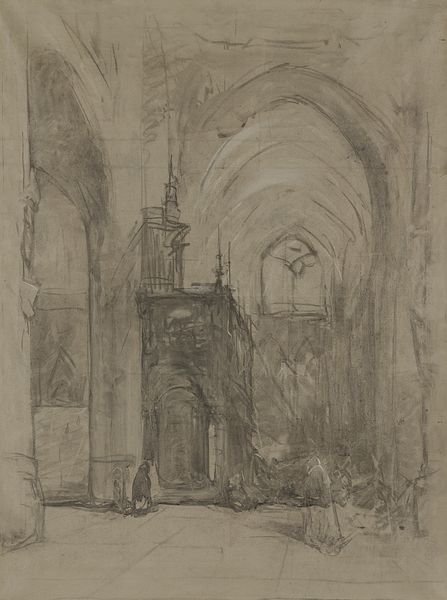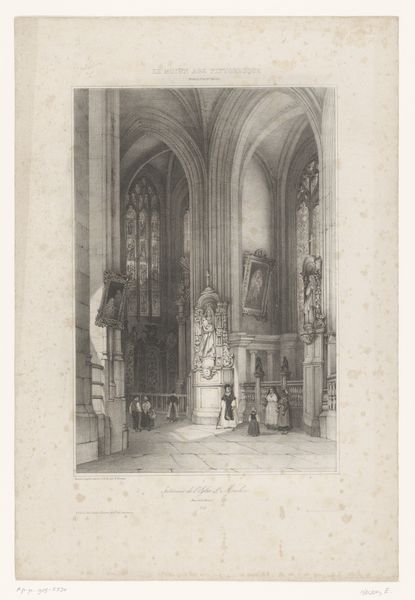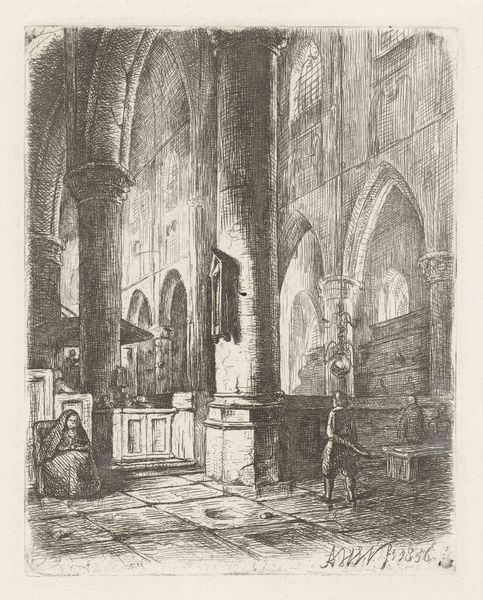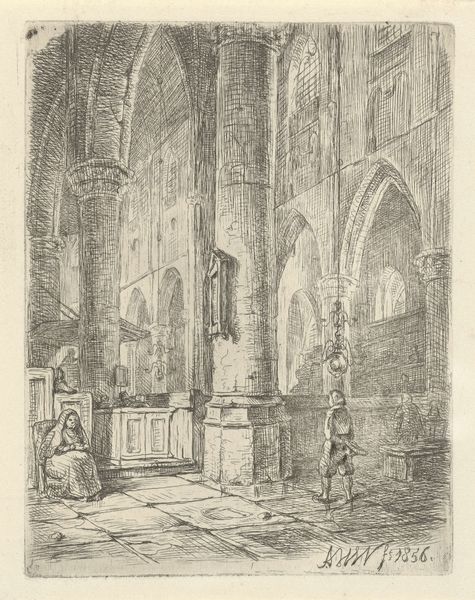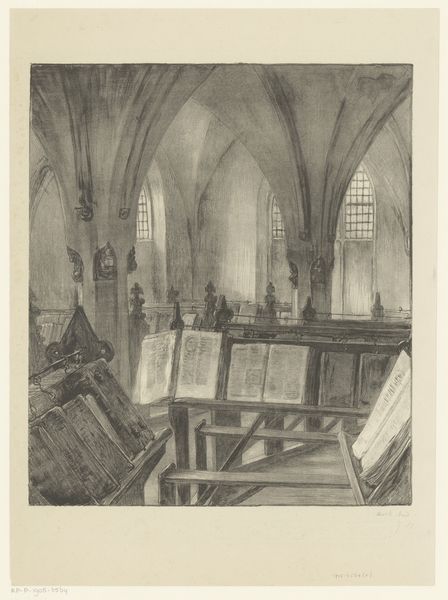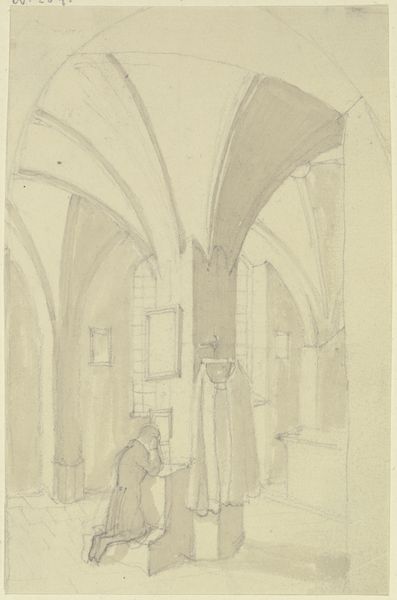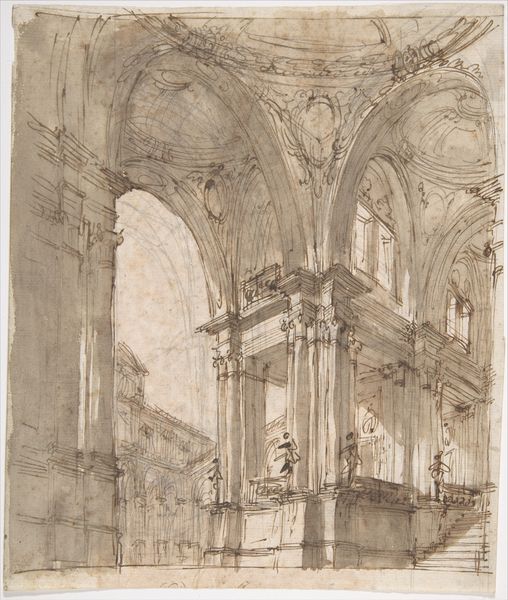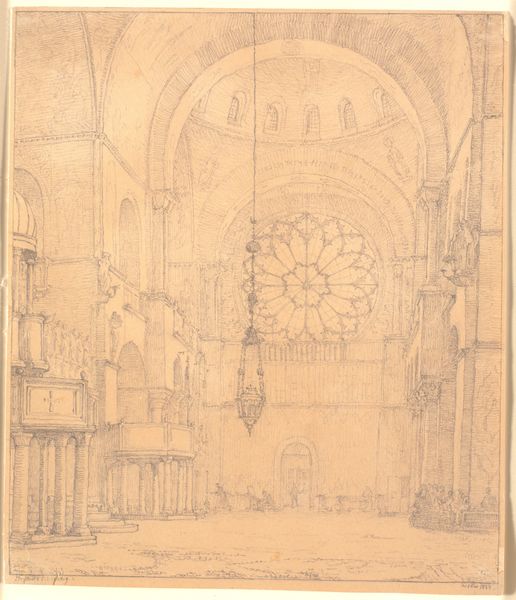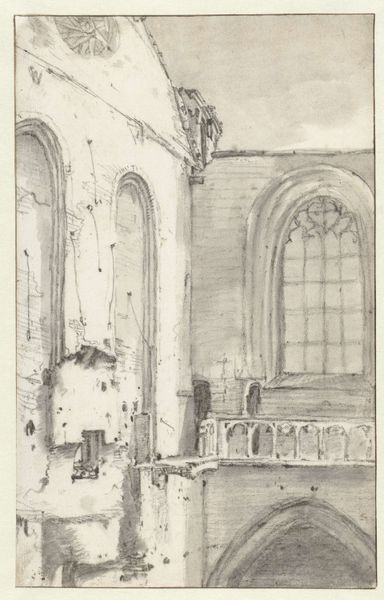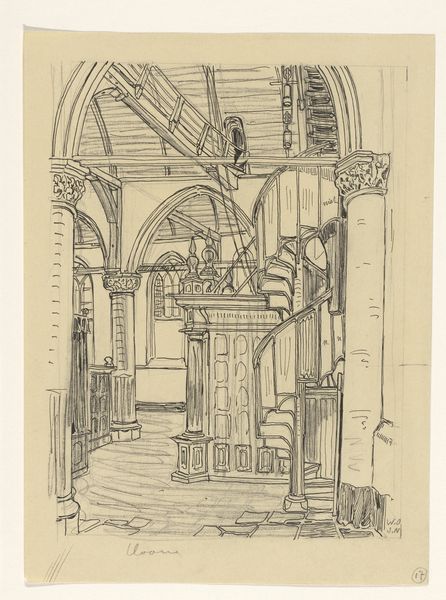
drawing, ink, pencil
#
portrait
#
drawing
#
toned paper
#
baroque
#
ink painting
#
ink
#
pencil
#
pencil art
#
watercolor
Copyright: Public Domain
Editor: This drawing by Ferdinand Bol, titled *A Nun Seated at the Altar in a Church*, captures a quiet moment. The somber ink and watercolor create such a reflective atmosphere. What stands out to you when you look at it? Curator: Considering Bol’s ties to Rembrandt, it's intriguing to observe this intimate portrayal of religious life against the backdrop of the Dutch Republic’s complex relationship with Catholicism. How does the setting, the architecture itself, contribute to the nun's individual experience? Editor: It feels isolating, even within such a grand space. The arches seem to dwarf her. Does that scale serve a specific purpose? Curator: Absolutely. Churches wielded considerable influence, both spiritually and politically. Presenting the nun within this architectural context invites questions about the individual's role within the institution. Was this piece commissioned, do you think, or part of a personal reflection by the artist? Editor: That's a great question, I hadn’t considered its patronage. Maybe its exploratory nature hints at a more personal reflection. Curator: Indeed. The use of drawing allows for a certain freedom of expression not always present in commissioned works. It almost acts as social commentary on religious devotion in that historical and cultural moment. Editor: Thinking about the period, that really shifts my understanding. I initially saw a quiet, personal scene, but now I'm considering the broader cultural context of religious practice. Curator: Exactly! Seeing art in this context transforms the way we see its historical imprint, not just its surface aesthetics. Editor: That’s so helpful. I'll definitely remember that the socio-political forces can affect the reception and perception of art. Thanks for the insight.
Comments
No comments
Be the first to comment and join the conversation on the ultimate creative platform.

